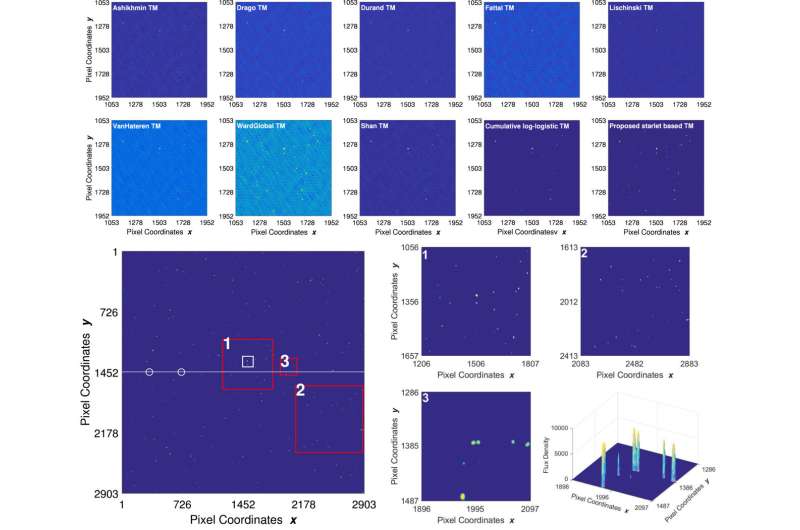This article has been reviewed according to Science X's editorial process and policies. Editors have highlighted the following attributes while ensuring the content's credibility:
fact-checked
trusted source
proofread
Researchers attempt to improve detection of high dynamic range and large field-of-view radio sources

Detection of compact faint radio sources of low frequency and total sky observation will be a hot topic in the research of the square kilometer radio array (SKA), and the pre-research on data-oriented algorithms is significant.
Dr. Shan Hao from the Xinjiang Astronomical Observatory of the Chinese Academy of Sciences and his collaborators carried out a preliminary study on the high dynamic range (HDR) radio source detection algorithm based on the full set alternative data release 1of TIFR GMRT Sky Survey (TGSS).
The results were published in Astronomy and Computing.
The researchers proposed an angular resolution and discrimination algorithm based on the HDR compression tone-mapping and gain control, which was embedded in the wavelet multi-scale framework.
"Our proposed algorithm has certain advantages. It avoids unexpected changes and loss of integrated flux density information in the traditional methods, as well as excessive and false high dynamic information," said Dr. Shan.
The researchers used tone-mapping and gain control to simulate human visual system, and adapted the results to display devices by reducing the HDR. The radio source was identified by setting the discovery detection rate, missing detection rate and false detection rate, as well as a set of criteria.
At present, the researchers are carrying out feasibility study on neural network and super-resolution image restoration of radio scenes. In order to achieve satisfying results for higher resolution data, the algorithm will be improved and applied to the data of the Murchison Wide-field Array (MWA).
More information: H. Shan et al, Wavelet based tone mapping (TM) enhancement to a detection system for faint and compact sources in HDR and large FOV radio scenes, Astronomy and Computing (2022). DOI: 10.1016/j.ascom.2022.100684
Provided by Chinese Academy of Sciences





















